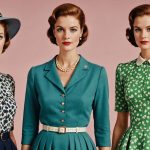Defining Wellness Trends in UK Women’s Fashion
When exploring wellness trends within UK women’s fashion, it’s essential to first understand what qualifies as a wellness-related influence. Wellness trends emphasize comfort, health, and mindfulness, shaping clothing choices that promote physical and emotional well-being.
Key characteristics of wellness trends in fashion include breathable fabrics, adaptive fits, and designs that support an active lifestyle while remaining stylish. UK women increasingly gravitate toward apparel that merges function with aesthetic appeal—garments that encourage ease of movement and enhance mental clarity through thoughtful design.
Also to read : How can UK fashion trends support women’s mental health?
Examples of wellness concepts reflected in UK women’s apparel are visible in the rise of athleisure wear and sustainable materials. Soft, natural fibers that reduce irritation and allow skin to breathe are now common. Additionally, UK women’s fashion is influenced by mindfulness, leading to simple, minimalistic designs that reduce sensory overload in daily wear.
Fashion influences also extend to color choices and patterns, which often lean toward calming, earthy tones to foster tranquility. Thus, wellness trends are not only about physical health but incorporate mental well-being, ultimately redefining how UK women engage with their wardrobes.
Also read : How do seasonal fashion trends affect women’s mood in the UK?
Recognising the Influence of Wellness on Fashion Choices
Wellness impact on fashion trends is becoming increasingly visible, especially among UK women whose consumer behaviour reflects a growing prioritisation of health and comfort. This shift in purchasing habits is driven by a desire for clothing that supports physical and mental wellbeing, prompting designers and brands to rethink their offerings.
Fashion trends now show a clear move towards soft, breathable fabrics and adaptable designs that encourage movement and relaxation. Materials such as organic cotton, bamboo, and moisture-wicking textiles are gaining popularity due to their wellness benefits. These choices align with consumer behaviour that favours sustainable and skin-friendly options, highlighting an evolving relationship between wellbeing and style.
Industry perspectives underscore this change, with leaders acknowledging that consumer priorities have shifted from purely aesthetic considerations to include functionality and comfort. Wellness impact influences not only product design but also marketing strategies, as brands emphasise the holistic lifestyle benefits their collections provide. This integration of wellness impact into fashion trends reflects a broader societal movement toward balanced living, illustrating how consumer behaviour in the UK is shaping the future of fashion.
Quantitative Methods for Measuring Wellness Trend Impact
Tracking the impact of the wellness trend in fashion relies heavily on fashion analytics and market data. Sales figures serve as a primary indicator; by examining purchases of wellness-inspired apparel, businesses identify how widely these trends have been adopted. For example, brands can analyze the growth rates of categories such as athleisure or eco-friendly fabrics, which have surged due to consumer preferences for health and sustainability.
Trend metrics also come from monitoring online behavior. Search volumes for terms like “wellness fashion” or “comfortable activewear” reveal consumer interest in real time. Social media platforms provide valuable data on engagement and sentiment, helping gauge the push and pull of wellness concepts across different demographics.
Combining these data sources allows industry analysts to quantify the wellness trend holistically. They uncover not only sales outcomes but also market momentum and emerging consumer priorities. This approach enables more precise forecasting and strategic planning for brands eager to align with the ongoing wellness movement, ensuring their offerings resonate in a crowded marketplace.
Qualitative Approaches to Assessing Influence
Qualitative methods offer rich consumer insights by capturing nuanced perspectives often missed by quantitative data. Conducting interviews with industry experts and consumers reveals how wellness trends influence fashion choices on a personal and professional level. These conversations uncover motivations behind embracing certain styles or materials tied to wellness, offering depth beyond sales figures.
Trend analysis through reviewing fashion media and runway reports highlights thematic shifts that indicate evolving consumer preferences. Observing how designers incorporate wellness-inspired elements—such as comfortable fabrics or earth tones—helps identify when these ideas move from niche to mainstream. This approach also captures the cultural context, essential for understanding the broader impact on fashion studies.
Case studies play a critical role by detailing specific instances where wellness trends translate into high street collections, bridging the gap between avant-garde concepts and everyday wear. For example, analyzing how a major retailer adapts sustainable, health-focused designs can demonstrate practical applications and market responsiveness. Together, these qualitative approaches provide a comprehensive view of influence that balances creativity, consumer behavior, and industry dynamics.
Recommended Tools and Metrics for Fashion Brands
Understanding and measuring wellness metrics is crucial for fashion brands aiming to align their collections with consumer health trends. Implementing effective measurement tools equips a fashion business to track not only sales performance but also the impact of wellness-driven products on customer engagement.
Essential software includes analytics platforms that gather data on customer behavior, such as purchase frequency of activewear or sustainable materials. These tools help identify patterns and preferences aligned with wellness trends. Fashion brands can focus on key performance indicators (KPIs) like product return rates, customer satisfaction scores, and social engagement related to wellness-focused campaigns.
Consumer feedback is invaluable. Sentiment analysis tools analyze reviews, social media mentions, and survey responses to gauge public perception. This continuous assessment enables brands to refine collections and marketing strategies in real time. Combining quantitative data with qualitative insights ensures a comprehensive understanding of how wellness influences purchasing decisions. Using these tailored measurement tools enables fashion businesses to stay competitive and responsive in a rapidly evolving market.











